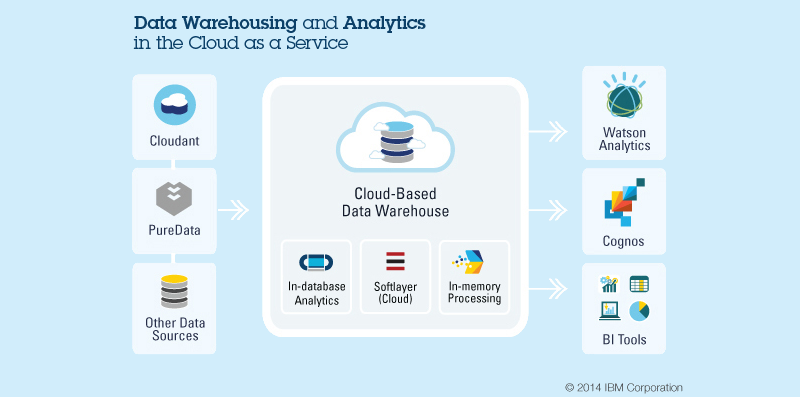 NEWS
NEWS
 NEWS
NEWS
 NEWS
NEWS
After a series of high-profile investments in cloud-based data warehousing startups, IBM Corp. is joining the fray with an update to its own managed analytics platform aimed at leveling the playing field against the younger competition. The focus in the new iteration of dashDB Enterprise is scalability.
The service combines the company’s homegrown in-memory storage management software, which consists of several different technologies collectively known as BLU Acceleration, with the native analytic capabilities gained through its acquisition of Netezza Corp. four years ago. That enables dashDB to ingest data faster than many alternatives, but until now it could only handle a relatively small handful at a time.
The new DashDB Enterprise MPP plan introduced this morning, which takes its name from the massively parallel processing architecture under the hood, allows organizations to run large multi-node clusters the same way as the single-instance deployments available until now. That is to say, without the hassle of provisioning storage capacity and processing power on their own.
That automated scalability will help enable dashDB to compete with the other cloud-based data warehousing services out there over much larger deals than before, finally giving the performance enhancements that IBM has spent so many resources building a chance to truly shine. To help organizations take advantage of that speed, the new plan also comes with a connector for importing data from on-premise deployments of Oracle Corp.’s popular relational database.
It’s joined by integration with Twitter, the latest product of the much-touted data partnership IBM announced with the social networking giant last year, that provides direct access to its real-time message feed. That kind of fast-moving information is a prime candidate for putting into an in-memory database that doesn’t suffer from the delay associated with fetching files from remote storage like more conventional systems.
But social interactions are only one of many kinds of information that organizations are analyzing nowadays, which is why IBM is also throwing open data connectors into the mix. The company hopes that the combined package will help set dashDB Enterprise MPP apart not only – or perhaps even mainly – from recently funded startup rivals like Snowflake Computing Inc. and Cazena Inc. – but also Amazon Inc.’s Redshift platform. The data warehouse is the fastest growing service in the company’s lineup, which is saying a lot for the world’s top cloud provider.
Support our mission to keep content open and free by engaging with theCUBE community. Join theCUBE’s Alumni Trust Network, where technology leaders connect, share intelligence and create opportunities.
Founded by tech visionaries John Furrier and Dave Vellante, SiliconANGLE Media has built a dynamic ecosystem of industry-leading digital media brands that reach 15+ million elite tech professionals. Our new proprietary theCUBE AI Video Cloud is breaking ground in audience interaction, leveraging theCUBEai.com neural network to help technology companies make data-driven decisions and stay at the forefront of industry conversations.